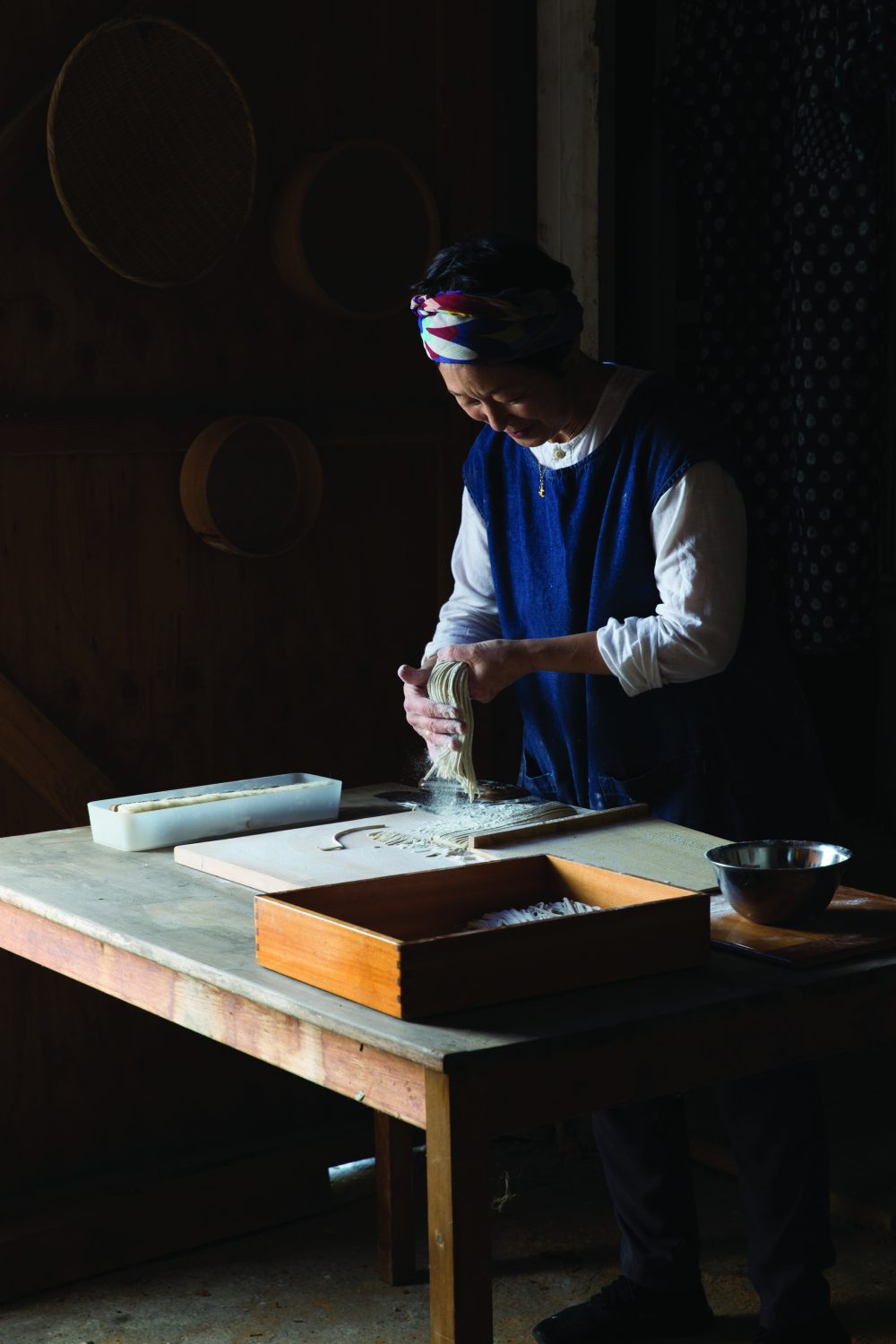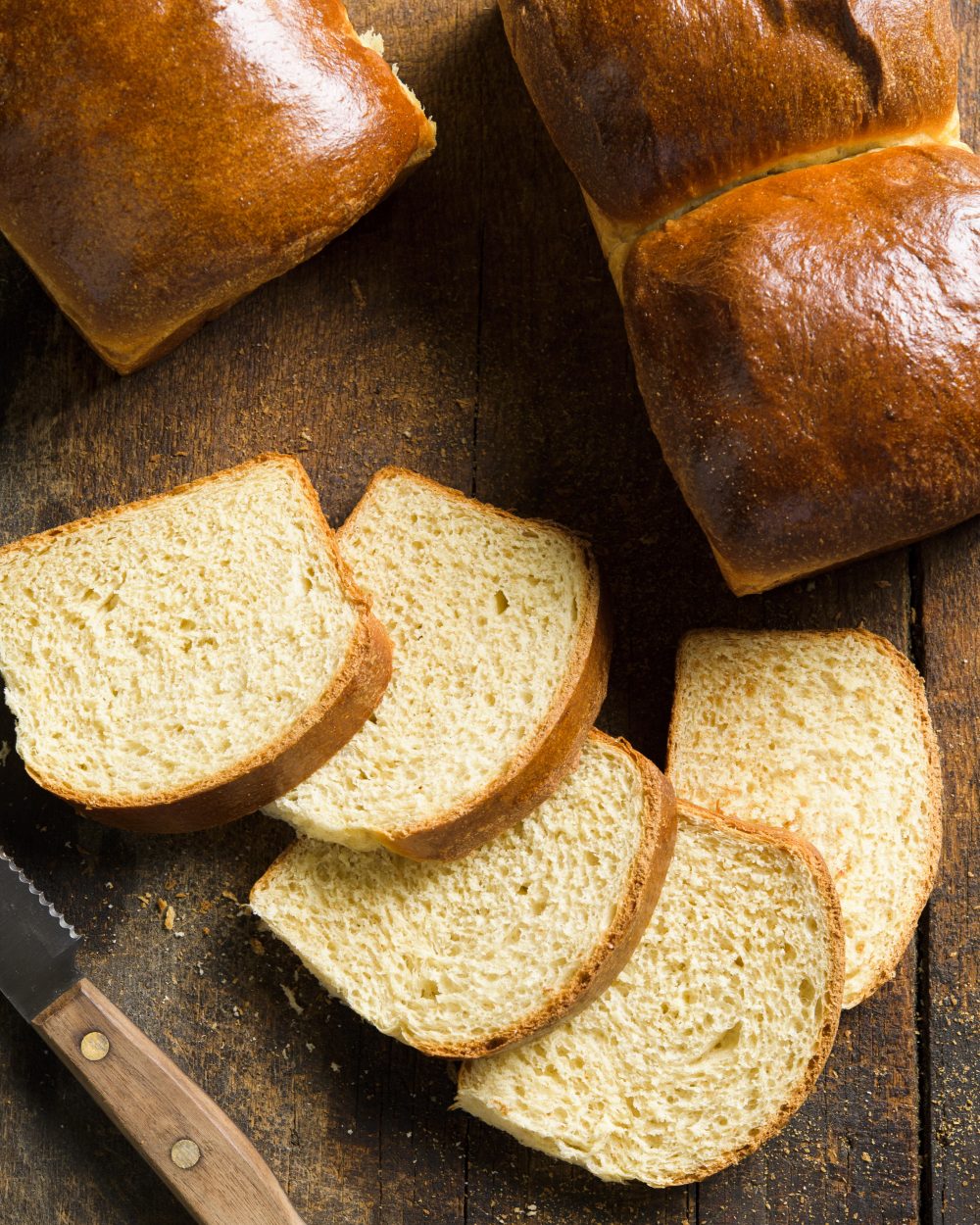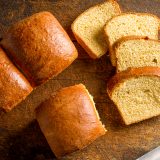
Inside the Incredible World of Japanese Cooking with Sonoko Sakai
Listen now on Milk Street Radio.
As a child growing up in Japan, Sonoko Sakai had the most modern of grandmothers, a woman whose European lineage emanated from her kitchen through the enticing, exotic aroma of baking bread.
“My grandmother was an avid baker, and this was very unusual for someone in the 1960s,” says Sakai, a cooking instructor who came to the U.S. during high school. “She was probably the only lady in town who owned an oven, so neighbors would come over just to smell her bread and cakes.”
“Anybody who is intimidated by the idea of making bread should start with this milk bread. It’s so easy, and it tastes so good, you feel really rewarded for making something from scratch.”
A quarter Swiss, Sakai’s grandmother took pride in her knowledge of Western baked goods that had barely existed in Japan during her own childhood. But her method skewed Japanese: Instead of kneading the dough with her hands, she sometimes would let the children step on it with their feet, as is done when kneading dough for udon noodles.
“I got to benefit from her story telling because everything to her was something new,” says Sakai, author of “Japanese Home Cooking.” “And by the time that trickled down to my generation, we ate bread every day, with school lunches or, you know, afterschool snacks.”
Today, shops across Japan sell Westernstyle premade “sandos” with chicken katsu stuffed between slices of fluffy white bread. Toast cafés offer pillowy, 2-inch thick slices slathered with butter and jam for breakfast. So dramatic is the change, in fact, the Japanese now consume more bread than rice.
One particularly popular variety is shokupan, or literally “food bread,” a cottony loaf with a thin, golden crust and uniform moist crumb. It’s sort of a chewier, creamier Wonder Bread enriched with powdered milk, and was the result of two converging postwar factors. First, a rice shortage in Japan prompted the United States to ship excess wheat to Japan. Second, an agriculture program taught dairy production to farmers on the north ern island of Hokkaido. This latter development also helped give rise to the bread’s nickname: milk bread.
“All this extra milk or dairy was something very new for the Japanese diet,” says Sakai. “The milk gave it [the bread] this creamy texture, this elastic chewiness that we could say is mochi mochi.”
Another key to the exceedingly moist texture is a gel called tang zhong, sometimes referred to as a water roux. A mixture of bread flour, whole milk and water is brought to a boil while being whisked. It then is cooled and combined with the rest of the dough ingredients, which include both whole and powdered milk.
The hot liquid in the water roux gelatinizes the flour’s starch. Those starches allow the dough to hold more moisture, yet prevent the moisture from reacting with the proteins in the flour, a process that otherwise would produce gluten that would toughen the finished bread. That additional moisture leads to greater steam for leavening, making the bread lighter and fluffier. Additionally, the whey in both varieties of milk weakens the existing gluten, keeping the bread particularly tender.
After one rise, the yeasted dough is split and put into a loaf pan; after another rise it is brushed with an egg wash to produce a dark, golden crust. Many loaves are baked in Pullman (enclosed) pans for a uniform rectan gular shape, while others are allowed to puff above an opentopped loaf pan for a golden, domed texture. The finished bread is pulled apart in sections like squishy dinner rolls.
Rye flour adds a rich earthiness that balances the milky sweetness of the bread dough.
In another twist we loved, Sakai, who enjoys working with heirloom grains, recommends adding to the dough a small amount of nonwhite flour, such as spelt or Sonora. “Without it, there’s a little bit of that nostalgia, but when I make milk bread, I like to introduce a little bit of different grain,” says Sakai. “It becomes a heavier bread, and I find that it just adds more nutrients and flavor.”
For our version, we opted for easy tofind rye flour, which added a rich earthiness that balanced the milky sweetness of the dough. And making the water roux—and this recipe— was much less finicky than it sounds.
“I think that anybody who is intimidated by the idea of making bread should start with this milk bread,” says Sakai. “It’s so easy, and it tastes so good, you feel really rewarded for making something from scratch.”





